
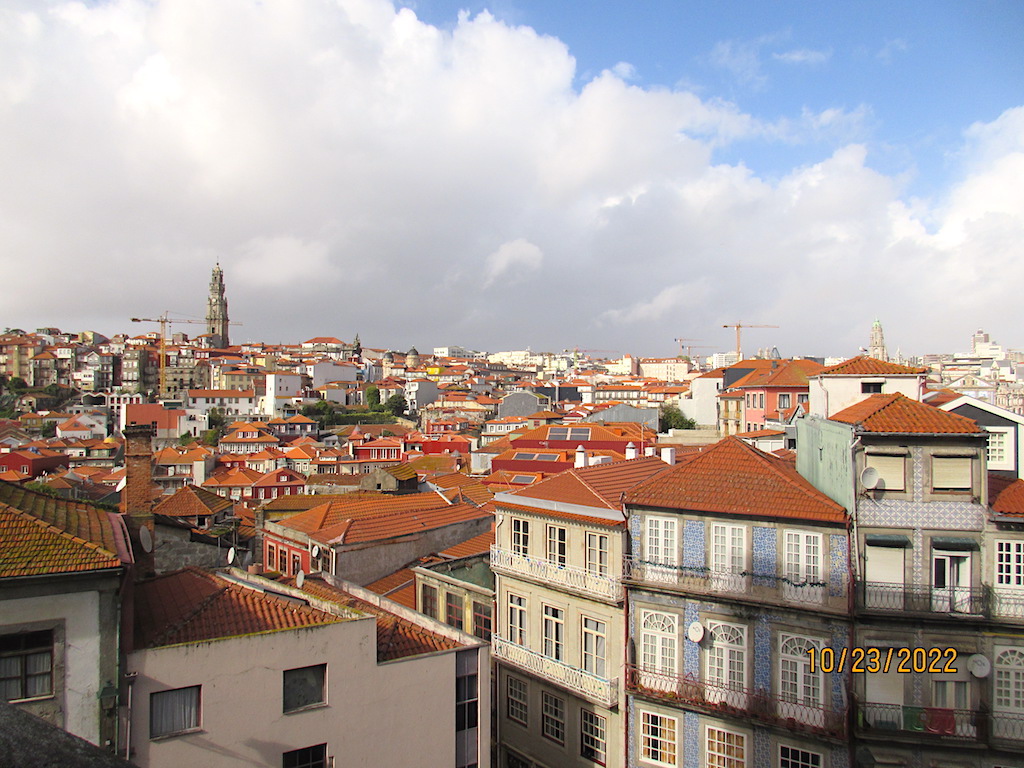
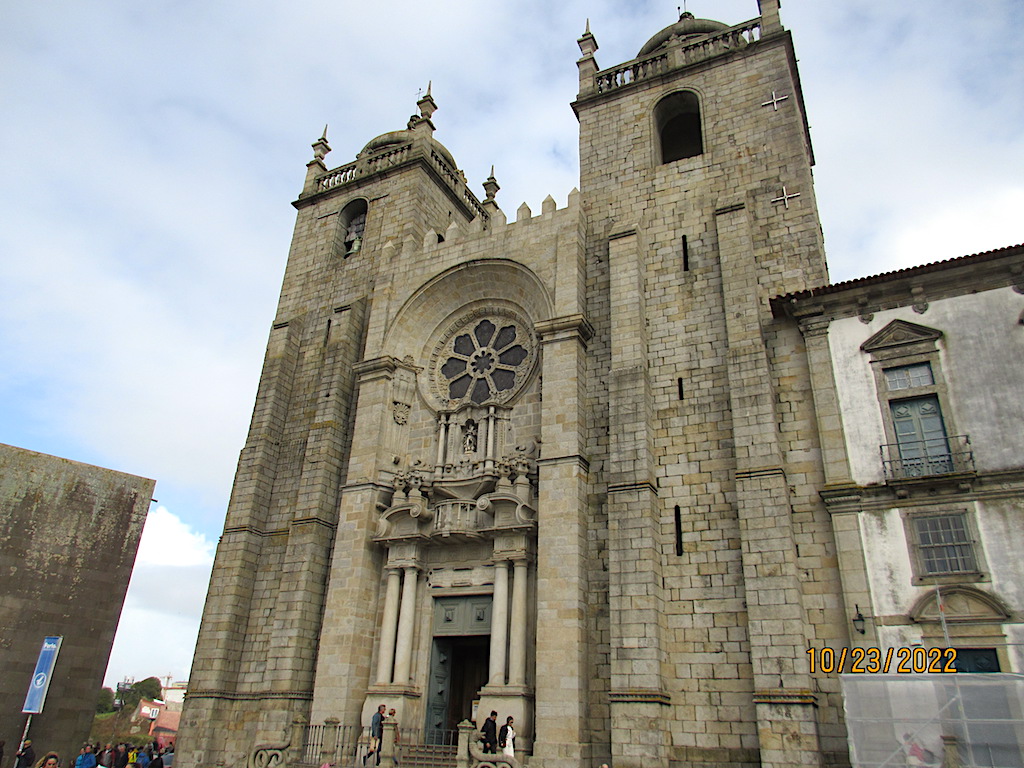
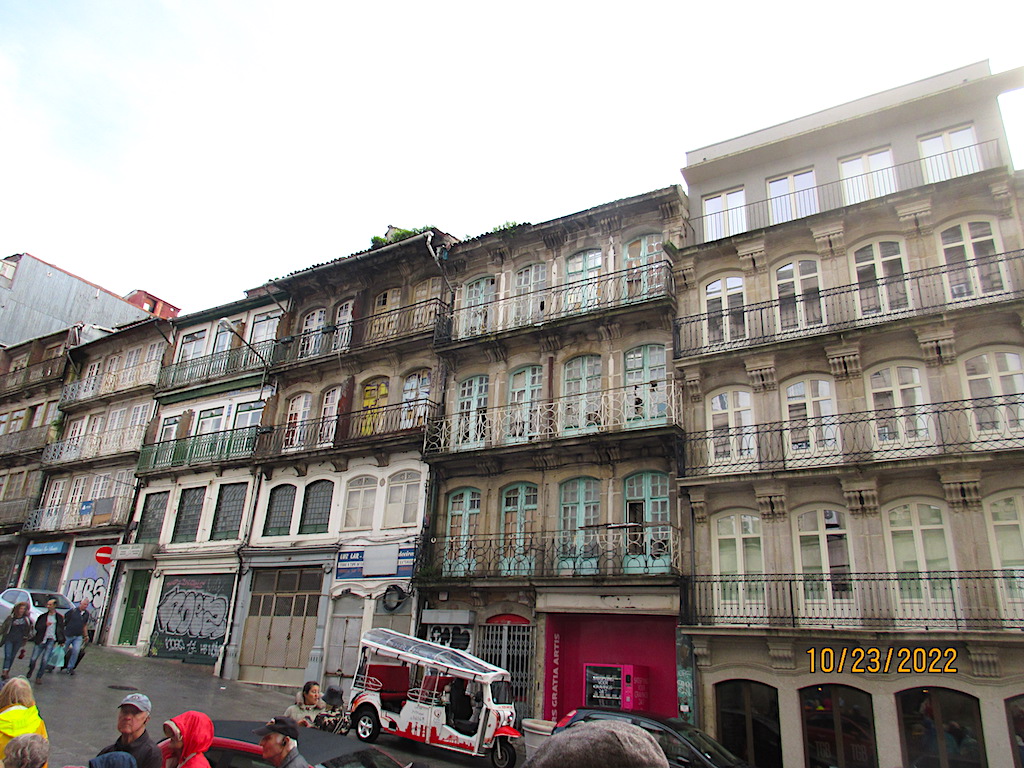
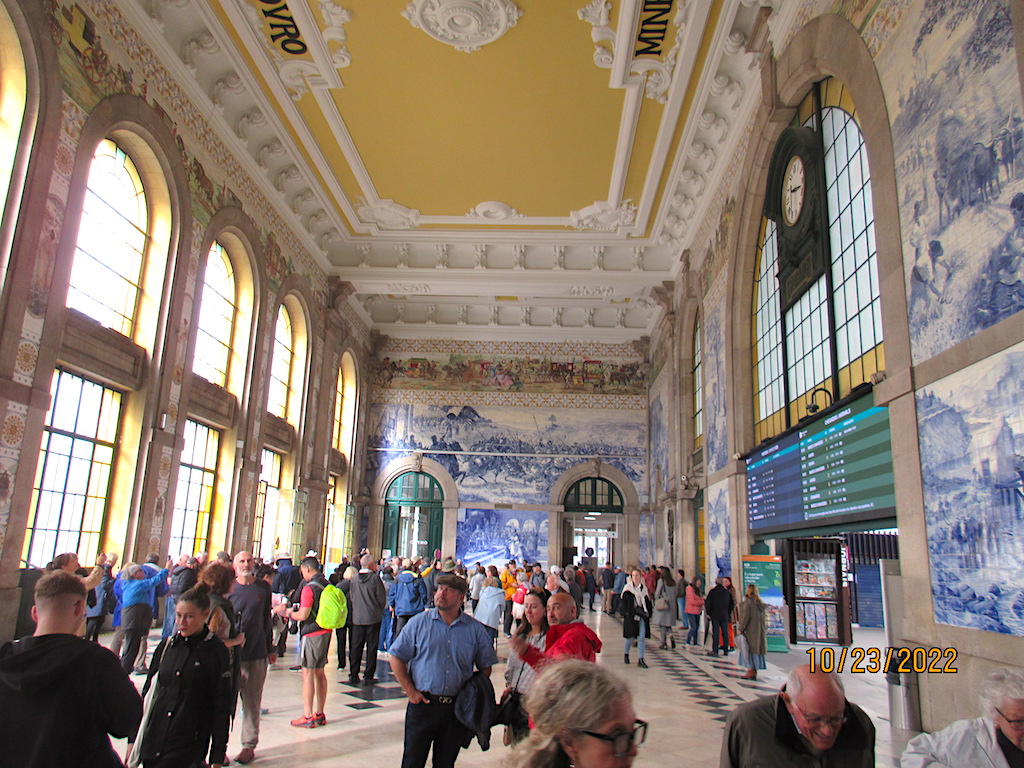
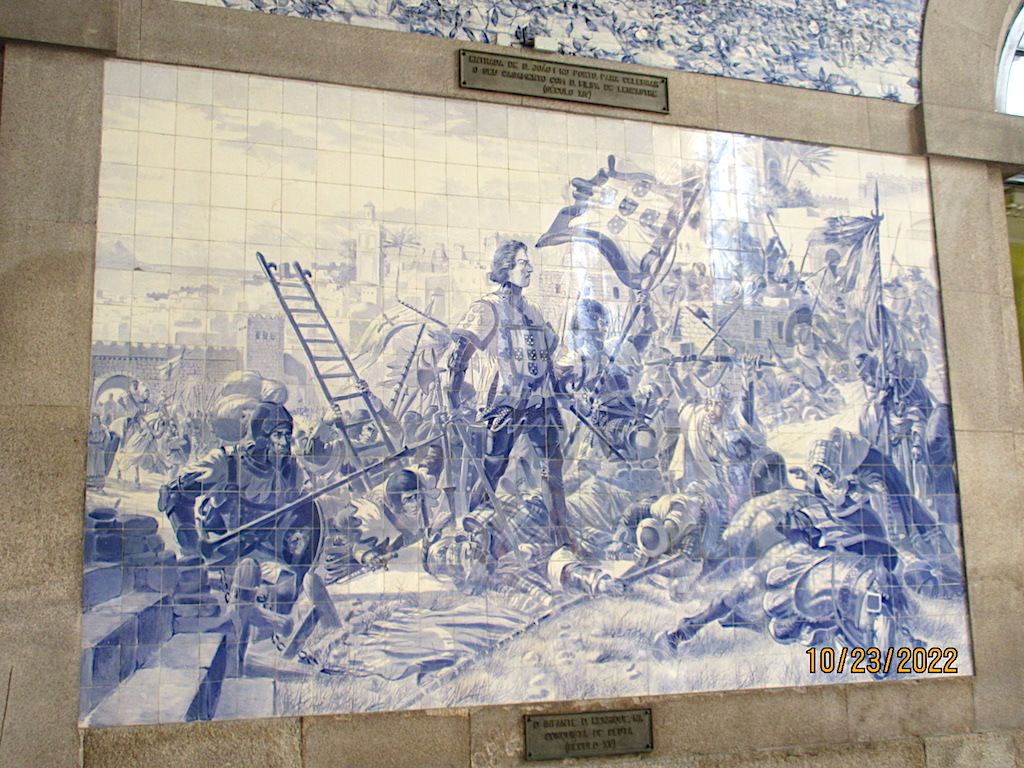

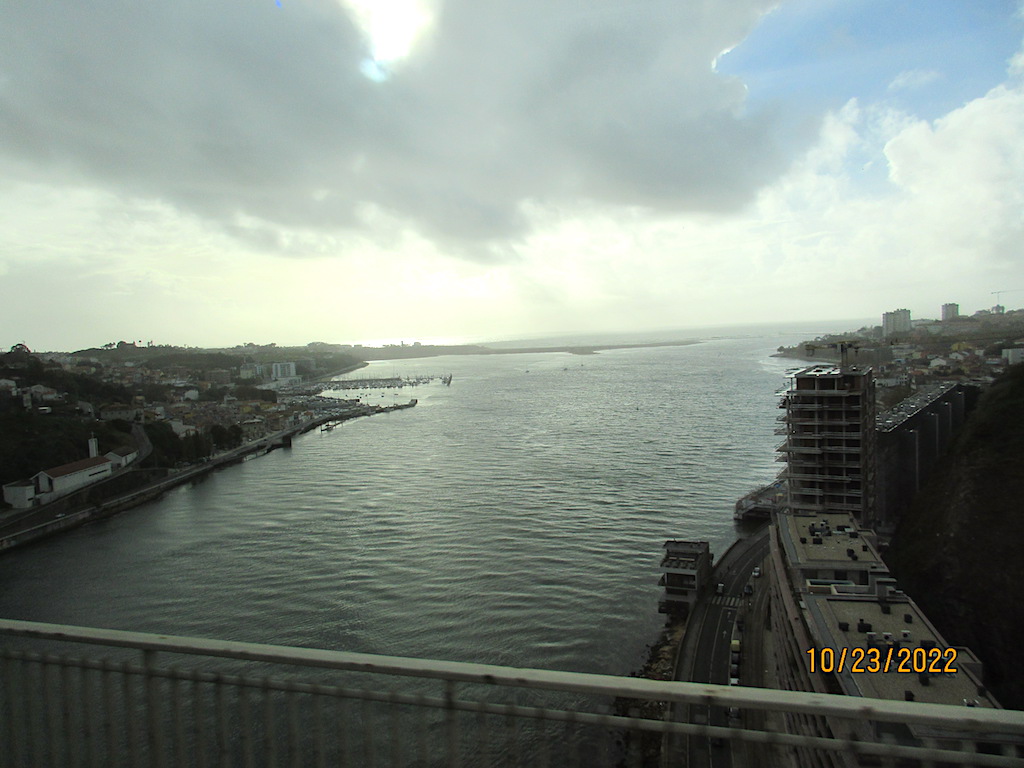
On our final leg of our cruise on the Douro River we sailed into the town of Porto this morning in a downpour of rain with very little visibility. Porto, with a population of about 240,000 people, is the second largest city in Portugal after Lisbon. This does not account for the nearly 2.4 million people living in the metropolitan area. The city is located along the Douro River in northwestern Portugal and its historical core was named a UNESCO World Heritage Site in 1996. Across from Porto is the town of Gaia where we docked. Gaia is the area where most of the wineries have cellars. The higher humidity and lower temperatures are more conducive to wine storage than in the heat of the Douro River Valley.
The history of Porto began around 300BC with the Celtic people being the first known inhabitants. Ruins from this period have been discovered in several areas. During the Roman occupation of the Iberian Peninsula the city developed as an important port. In the 14th and 15th centuries, Porto’s shipyards contributed to the development of Portuguese shipbuilding.
One of Portugal’s internationally famous exports is the port wine named after Porto and produced in the Douro Valley as far back as the 13th century. Other top exports include cork and sardines.
On this morning we visited one of the city’s best-known cellars to check out the port wine that the city is known for. We took a short-guided tour of the Taylor wine cellar as well as had a tasting of both a white and a red port wine. The cellar sits high above the river on the Gaia side of the river where all of the wine cellars are located. The cellar has panoramic views over the city and the river.
We enjoyed lunch back onboard before a panoramic tour of the city of Porto, including the exterior of the Porto Cathedral, a Roman Catholic Church located in the heart of the old town.
We stopped in at the 1916 train station in the center of town to view the beautiful murals on the walls. These murals are painted on approximately 20,000 Azulejo tiles. The tiles are painted in blue on white tiles and are quite extraordinary. They reminded us of the ceramic Dutch tiles. The scenes depict battles, the conquest of Ceuta and many scenes from historical events in Portugal’s history. The city is filled with architecturally interesting buildings one stacked right next to another. The majority of buildings have red clay tile roofs which give the city skyline a very unique look.
After dinner, a local tuna band performed in the ships lounge. A tuna band is a group of university students in traditional university dress who play traditional instruments and sing serenades. This tradition originated in Portugal in the 13thcentury as a means for students to earn money and food. This group was ten students who performed local songs for about 45-minutes. It was very interesting.
